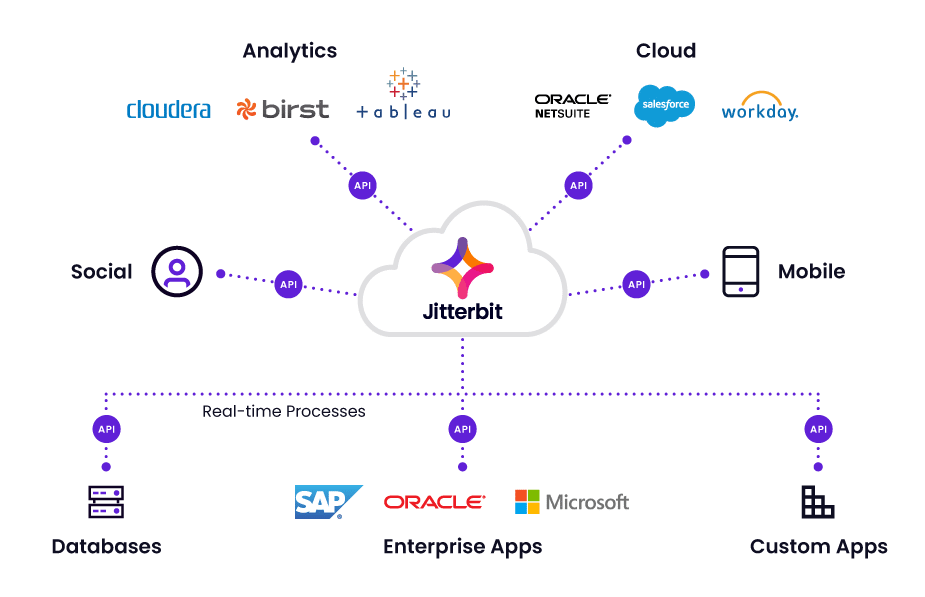Comprehensive Guide to API Integration: Enhancing Functionality and Efficiency
In today’s fast-paced digital landscape, API integration stands as a cornerstone for building efficient, scalable, and interconnected software systems. As businesses increasingly rely on diverse applications and services, understanding the nuances of API integration becomes crucial. This guide provides a deep dive into API integration, offering insights into its significance, implementation strategies, and best practices.
What is API Integration?
API (Application Programming Interface) integration refers to the process of connecting different software systems and applications via APIs to allow them to communicate and work together seamlessly. APIs serve as intermediaries that facilitate data exchange and functional interactions between disparate systems.
For example, when you use a third-party service to log in to an application (like using Google or Facebook credentials), that’s API integration at work. It allows your application to leverage existing services, thus improving user experience and functionality.
The Importance of API Integration
-
Enhanced Functionality: APIs enable applications to extend their capabilities by integrating with other services. This could include adding payment processing, accessing external data, or integrating with other software tools.
-
Improved Efficiency: By automating data exchanges and processes between systems, API integration minimizes manual work and reduces errors, leading to more efficient operations.
-
Scalability: APIs support scalability by allowing systems to interact with additional services as needed. This modular approach helps businesses expand their capabilities without overhauling their existing infrastructure.
-
Cost Savings: Integrating with third-party services through APIs can reduce development costs. Instead of building every feature from scratch, businesses can leverage existing solutions and focus on their core competencies.
Key Components of API Integration
-
API Endpoints: Endpoints are specific URLs or URIs that provide access to an API’s resources. Each endpoint corresponds to a specific function or data set within the API.
-
Authentication: Most APIs require authentication to ensure that only authorized users can access the data or services. Common methods include API keys, OAuth, and JWT (JSON Web Tokens).
-
Data Formats: APIs typically use data formats like JSON (JavaScript Object Notation) or XML (Extensible Markup Language) for data exchange. Understanding these formats is crucial for effective integration.
-
Request and Response: API integration involves sending requests to the API and receiving responses. Requests include parameters and headers that specify the desired action, while responses contain the data or status of the requested operation.
Best Practices for API Integration
-
Understand API Documentation: Thoroughly review the API documentation before integration. Documentation provides details on endpoints, authentication methods, data formats, and error handling.
-
Implement Robust Error Handling: APIs may return errors due to various reasons, such as invalid parameters or server issues. Implementing proper error handling ensures that your application can gracefully manage these situations and provide a better user experience.
-
Optimize Performance: Minimize the number of API calls and optimize data retrieval to improve performance. Caching frequently accessed data can also reduce latency and enhance responsiveness.
-
Ensure Security: Protect sensitive data by using secure authentication methods and encrypting data transmissions. Regularly review and update security practices to address potential vulnerabilities.
-
Test Rigorously: Conduct thorough testing to ensure that the API integration functions correctly under different scenarios. Testing helps identify issues early and ensures that the integration meets the desired requirements.
Common Challenges in API Integration
-
Compatibility Issues: Different APIs may use varying protocols, data formats, or authentication methods, leading to compatibility challenges. Ensuring that your application can handle these variations is essential.
-
Rate Limiting: APIs often impose rate limits to control the number of requests from a single user or application. Exceeding these limits can result in throttling or temporary access denial. Implement strategies to manage and optimize API usage.
-
Versioning: APIs may evolve over time, leading to changes in endpoints or data structures. Managing API versioning and ensuring compatibility with your application is crucial to avoid disruptions.
-
Data Security: Integrating with external APIs introduces potential security risks. Ensuring that data transmitted between systems is secure and that APIs follow best security practices is essential for protecting sensitive information.
Expert Tips for Successful API Integration
-
Start Small: Begin with a small, manageable integration to test the API’s functionality and understand its behavior. This approach helps identify potential issues early and allows for adjustments before scaling up.
-
Monitor Performance: Regularly monitor the performance of your API integrations to identify any bottlenecks or issues. Performance monitoring tools can provide insights into response times, error rates, and overall efficiency.
-
Stay Updated: Keep abreast of updates and changes to the APIs you integrate with. API providers may release new features or deprecate old ones, so staying informed helps ensure continued compatibility and functionality.
-
Engage with the Community: Participate in forums or communities related to the APIs you’re using. Engaging with other developers can provide valuable insights, solutions to common problems, and best practices.
Conclusion
API integration plays a pivotal role in modern software development, enabling applications to communicate and collaborate effectively. By understanding the key components, best practices, and potential challenges associated with API integration, businesses can enhance their software systems’ functionality, efficiency, and scalability. Following expert tips and staying informed about the latest developments ensures successful integration and a competitive edge in the digital landscape.

